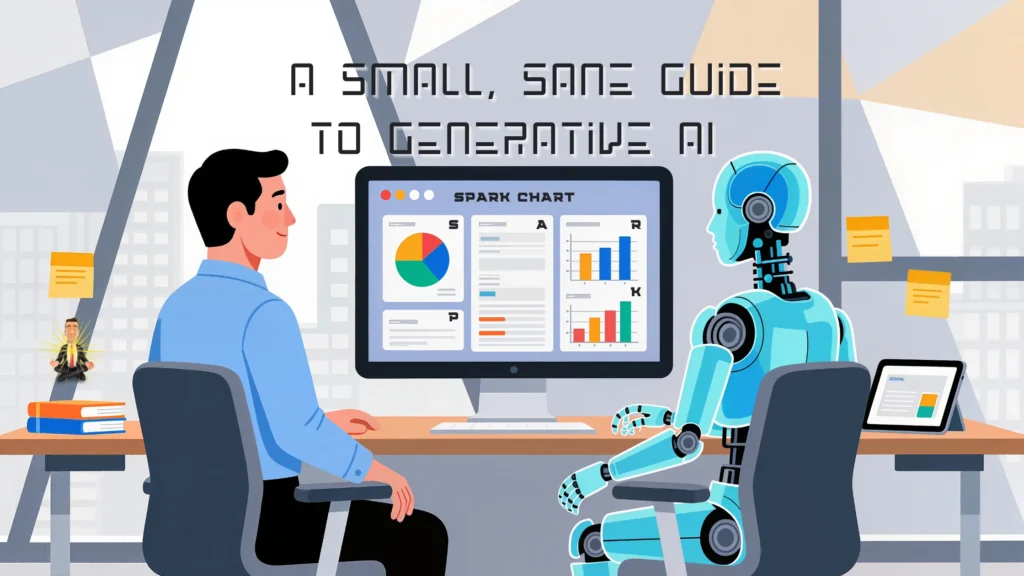People meet change with two feelings: excitement and dread. Excitement, because change brings opportunity. Dread, because it exposes our gaps. As a leader, your job is to turn both into momentum.
Gen-AI is not just another tool—it’s a chance to reimagine how we create and deliver value. This requires bold, strategic leadership that invites people—your greatest resource—to be participants, not passengers. Here are a few practical steps to lead through uncertainty, reduce fear, and turn Gen-AI into speed, quality, and advantage.
1. Position AI as a Force Multiplier
Machines can predict based on the past. Humans can imagine what’s next. When we align AI’s efficiency with human creativity and care, we multiply results.
Start small with low-risk pilots—summaries, emails, or research notes—and show the before-and-after wins in time and quality. Keep the story human: “This tool gave Maya two hours back for client strategy,” not “We deployed a model.”
Always answer the WIIFM (“What’s in it for me?”): clearer mastery, bigger impact, faster growth. When people see AI as an enabler of purpose—not competition—it becomes a true force multiplier for human potential.
2. Begin with Service, End with Knowing
Put people first. Walk through their workflows and pinpoint where AI can ease high-volume or repetitive tasks. Start with safe, simple applications so the tool feels like help, not judgment.
Then, build “knowing” into every process. Ask: “What is this based on?” “Who’s affected?” “Is AI the right tool—or would a quick call do better?” Always keep human review on important outputs. Serve real needs, apply disciplined judgment, and you’ll turn AI into a trusted partner.
3. Build Around Purpose
Anchor every initiative in a clear purpose: What customer outcome will we improve, by how much, and by when—with AI as the assist, not the hero?
Keep the message simple enough to guide daily choices and bold enough to energize teams. Define how AI creates value (speed, quality, cost, or engagement) and where it will reshape talent development. Then invest in your own understanding—so you can connect AI’s capabilities to purpose with confidence.
When purpose stays front and center, AI becomes an amplifier—not a distraction.
4. Install Operational Resilience
Treat resistance as a source of strength. Invite skeptics to stress-test pilots, spot risks, and challenge assumptions. Hold blameless debriefs: what worked, what broke, what we’ll change this week.
Encourage teams to co-design prompts and set guardrails. When people help refine the system, they own it—and resistance turns into energy. Done consistently, this sharpens thinking, reduces risk, and fuels practical innovation.
In Closing
Many worry, “What if the machine makes me irrelevant?” Let’s start gentler: progress is always a negotiation with fear. Gen-AI doesn’t replace us—it reminds us that great work comes from judgment, care, and meaning.
The point of technology is not technology—it’s to deepen our service to colleagues, customers, and communities.
Return to SPARK as you lead:
• Service keeps people at the center.
• Purpose keeps the aim clear.
• Attraction makes adoption easy and rewarding.
• Resilience turns resistance into fuel.
• Knowing safeguards standards and trust.
Hold to this, and you’ll turn change into confidence—and Gen-AI into a force that multiplies human potential.
SOURCE
